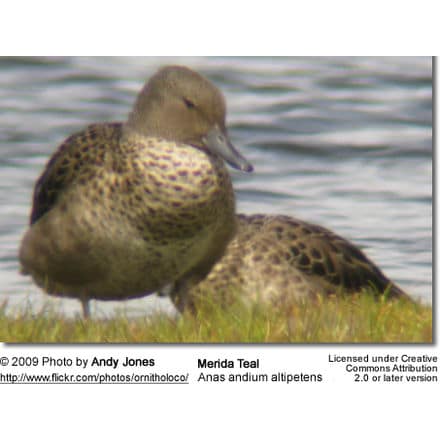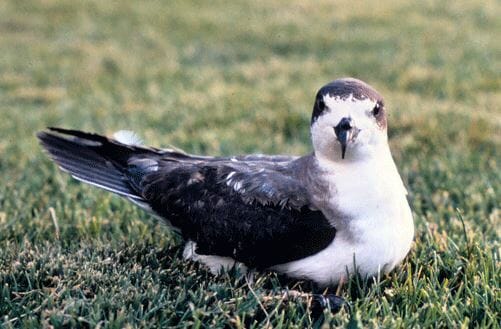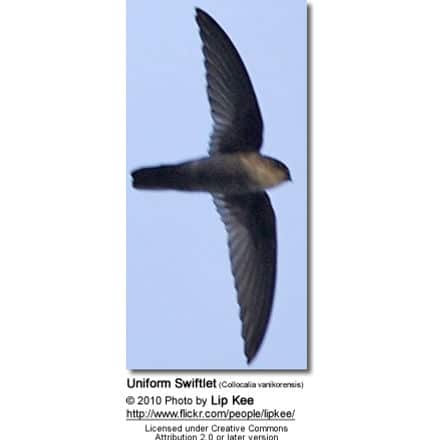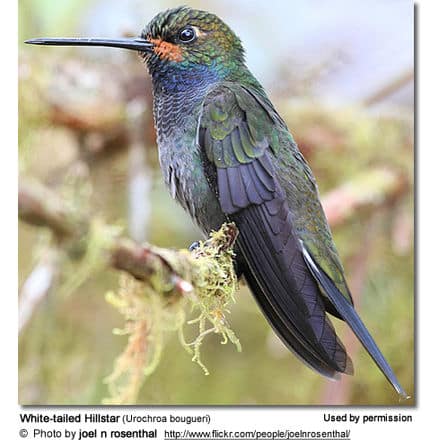Andean Teal (Anas andium)
The Andean Teals (Anas medium) was previously considered a subspecies of the Yellow-billed Teals – and they were then commonly referred to as “Speckled Teals”.
The Andean Teals can be differentiated from the southern Yellow-billed Teals by their dark greyish bills.

Distribution / Range
The Andean Teal occurs naturally in the Andes of Colombia and northern Ecuador, where it is found in freshwater lakes, ponds, rivers, marshes, and wooded swamps – usually at high altitudes; however, they may move down to coastal areas in the winter.
Subspecies and Ranges
- Andean Teal or Andean Speckled Teal (Anas indium formerly Anas flavirostris andium – P. L. Sclater and Salvin, 1873) – Nominate Race
- Range: Highlands of Colombia and Ecuador
- Merida Teal, Merida Speckled Teal, South American Green-winged Teal, or South American Teal (Anas andium altipetens formerly Anas flavirostris altipetens – Conover, 1941)
- Range: Highlands of northwestern Venezuela and adjacent parts of Colombia (Eastern Andes)
Alternate (Global) Names
Danish: Andeskrikand … German: Andenente, Andenkrickente … Spanish: Cerceta barcina … Estonian: kolumbia piilpart … French: Sarcelle à bec jaune, Sarcelle des Andes … Polish: cyraneczka andyjska … Slovak: kacica andská
Description
The Andean Teals measures between 14 -18 inches (35 – 45 cm). Its plumage is brown on the back and grey below. It has a green inner speculum (wing patch), bordered by buff on the leading edge and white on the trailing edge. However, the wing patches are usually only seen in flight and may look dark from below.
It has a dark brown head and a dark greyish bill.
Breeding
In Colombia, the breeding season typically commences in February or March.
They typically nest near water in thick vegetation. The nests are placed in large forks of trees. They may also use the tests of Quaker Parakeets (Monk Parakeets) or make their nests in holes in banks. They may also nest in house roofs. Nesting may occur in solitary or in loose groups. They usually produce only one brood a year.
This duck demonstrates some unique post-copulation behavior – after dismounting the female after mating, the males stretch themselves up high and swim around and alongside the females.
A clutch may consist of 1 – 5 eggs (occasionally as many as 8). The eggs are incubated for 22 -26 days to hatching. Both the males and females raise the young. The young fledge (leave the nest) when they are 6 – 7 weeks old.
Diet / Feeding:
Andean Teals feed by dabbling, upending (feeding upside down in water), or grazing on land.
It may submerge its head and on occasion even dive to reach food. In the breeding season, it eats mainly aquatic invertebrates, such as crustaceans, insects and their larvae, mollusks, and worms.
In winter, it shifts to a largely granivorous diet, feeding on seeds of aquatic plants and grasses, including sedges, rotting kelp, and seeds of pig vine.
Ducks generally feed on larvae and pupae often found under rocks, as well as aquatic animals, plant material, seeds, small fish, snails, and crabs.





